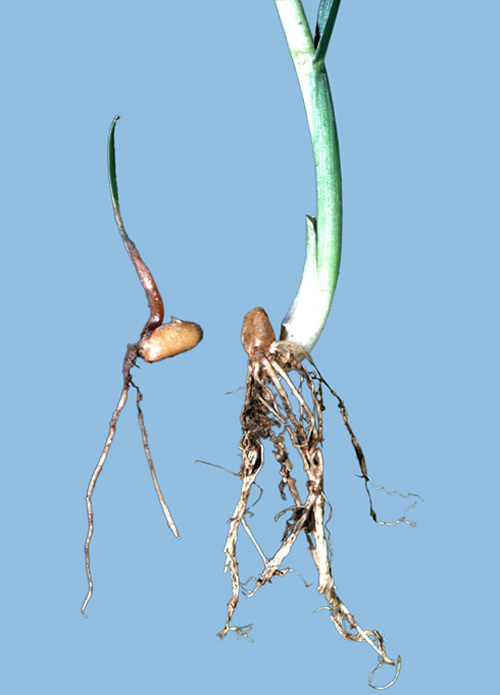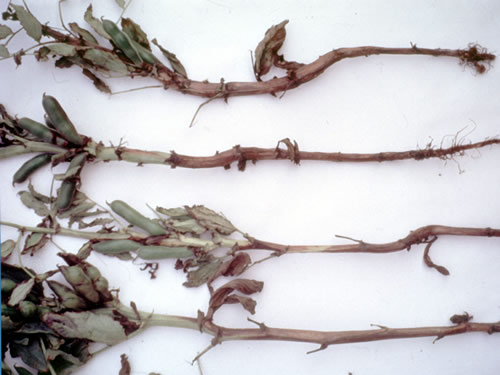
Growers have been alerted to some potential seed-borne disease problems in wheat, oilseed rape and field beans following wet and showery periods at critical times in the growing season.
Dr Jane Thomas, plant pathologist at the National Institute of Agricultural Botany, said health tests on seeds were vital if growers wished to save them to sow the following year.
She said: "NIAB's Labtest service will shortly start to receive seed samples from this year's harvest for health and quality checks. The results of those tests enable growers to know whether the seed is suitable for use, whether it is healthy enough to go in the ground, and in some cases, particularly with farm saved seed, the results help to make an informed decision on seed treatments"
On wheat, conditions earlier in the season were favourable for Microdochium nivale, which infects the developing seed and causes seedling blight.

Dr Thomas said: "I think it's going to be important this year for farmers to get their seed tested to see how high the levels of Microdochium are, and the good news is that it is quite easy to control with seed treatment. If levels are above 10% infection, then a seed treatment really does need to be applied. At the very high levels of infection of around 70 or 80%, farmers may not want to use seed for further crops. Microdochium is related to the Fusarium species which cause the production of mycotoxins, but Microdochium itself does not produce them.
It is also important to check for bunt in wheat, and tests are essential if the intention is to sow seed untreated, such as in the organic sector.
Dr Thomas said: "Bunt is quite often present in the seed samples we test, but at very low levels, which are not damaging and in recent years the number of samples with any detectable disease at all has been declining. However, it is critical that seed is tested to see whether bunt is present in a particular batch. If bunt is allowed to build up, an individual crop could be entirely lost because of the presence of the fishy-smelling bunt balls. It is extremely important that farmers keep the lid on bunt and seed tests are needed because the spores, which stick to the outside of healthy grain at harvest, can't be seen with the naked eye."
The recent warmer and humid weather could encourage the build up of Alternaria in oilseed rape. If purplish-brown spots develop rapidly on the pods, this could be a sign that seed will get infected. Badly infected seed may not emerge, or the infection may produce small brown spots on the cotyledons and leaves of next year's crop. These provide a low level of inoculum in the autumn which will contribute to disease next year if conditions are right.
Dr Thomas has also warned growers to be on their guard against stem nematode in field beans. The small worm-like nematodes, and the fungal disease Ascochyta, can both be seed-borne in beans. There is a relatively large area of the crop being grown this year, and it is anticipated this is going to increase next year.
She said: "If growers plan to save field bean seed this year, is really important that they get them tested for stem nematode. We have had several reports of nematode infestations in the field this year, and those infestations will get on the seed. If infected seed is sown again, problems with the crop are highly likely. The nematode has been encouraged by wet conditions, and may have arisen through existing soil-borne inoculum, or from a low level of infection on seed to start with, so it is really critical to get tests done this year."
